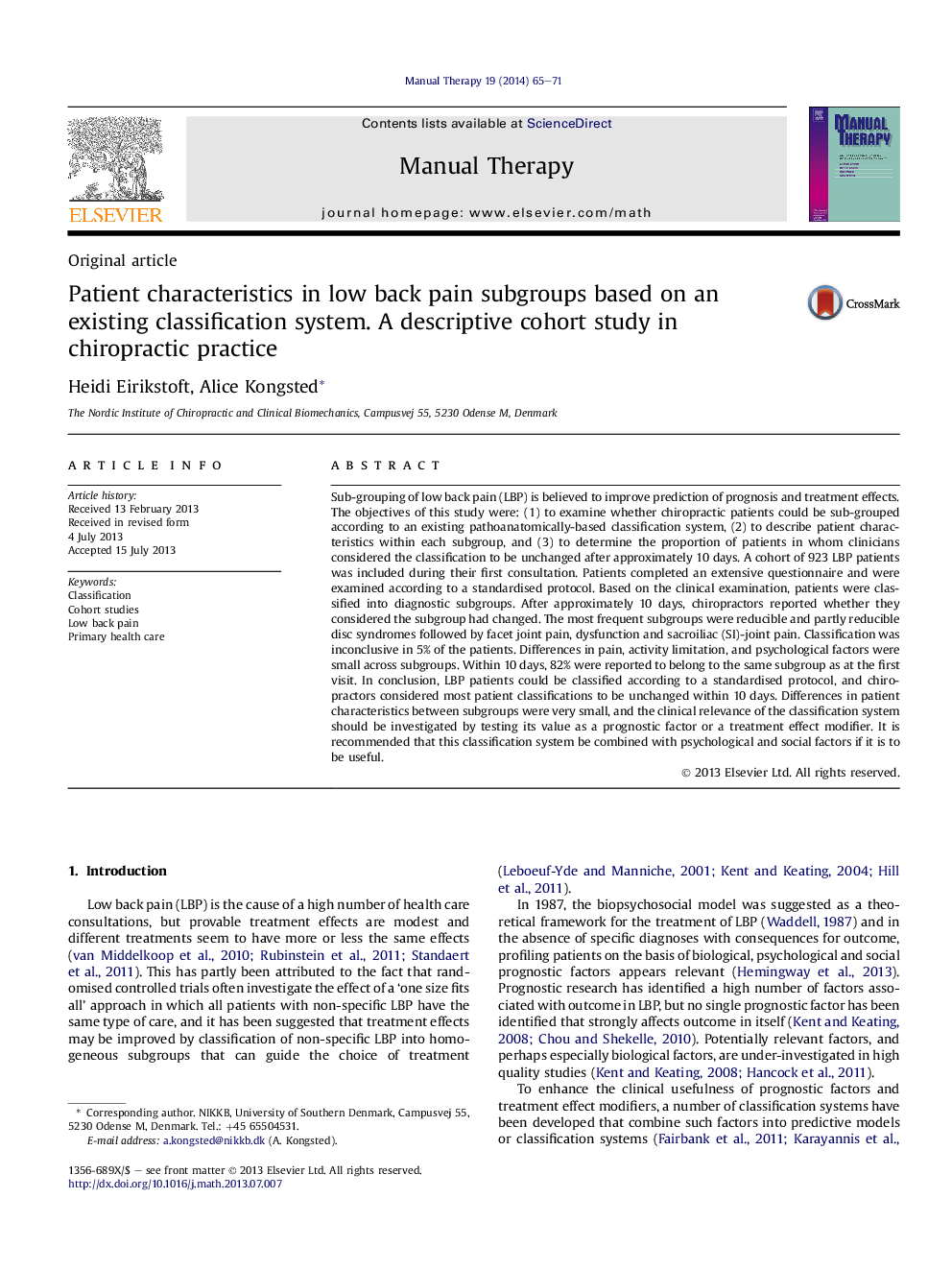| Article ID | Journal | Published Year | Pages | File Type |
|---|---|---|---|---|
| 2625172 | Manual Therapy | 2014 | 7 Pages |
Sub-grouping of low back pain (LBP) is believed to improve prediction of prognosis and treatment effects. The objectives of this study were: (1) to examine whether chiropractic patients could be sub-grouped according to an existing pathoanatomically-based classification system, (2) to describe patient characteristics within each subgroup, and (3) to determine the proportion of patients in whom clinicians considered the classification to be unchanged after approximately 10 days. A cohort of 923 LBP patients was included during their first consultation. Patients completed an extensive questionnaire and were examined according to a standardised protocol. Based on the clinical examination, patients were classified into diagnostic subgroups. After approximately 10 days, chiropractors reported whether they considered the subgroup had changed. The most frequent subgroups were reducible and partly reducible disc syndromes followed by facet joint pain, dysfunction and sacroiliac (SI)-joint pain. Classification was inconclusive in 5% of the patients. Differences in pain, activity limitation, and psychological factors were small across subgroups. Within 10 days, 82% were reported to belong to the same subgroup as at the first visit. In conclusion, LBP patients could be classified according to a standardised protocol, and chiropractors considered most patient classifications to be unchanged within 10 days. Differences in patient characteristics between subgroups were very small, and the clinical relevance of the classification system should be investigated by testing its value as a prognostic factor or a treatment effect modifier. It is recommended that this classification system be combined with psychological and social factors if it is to be useful.
